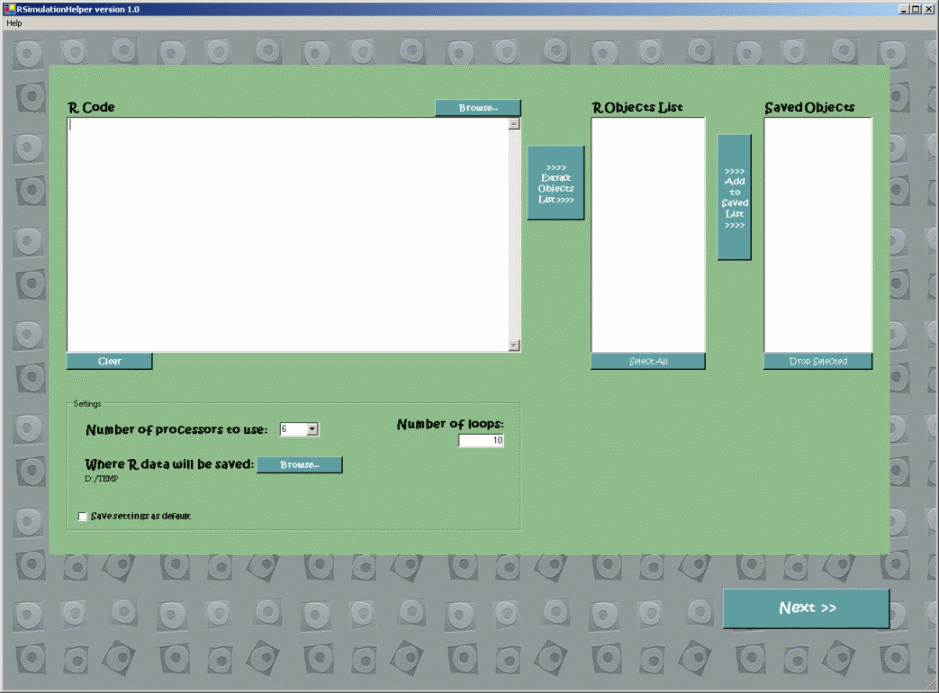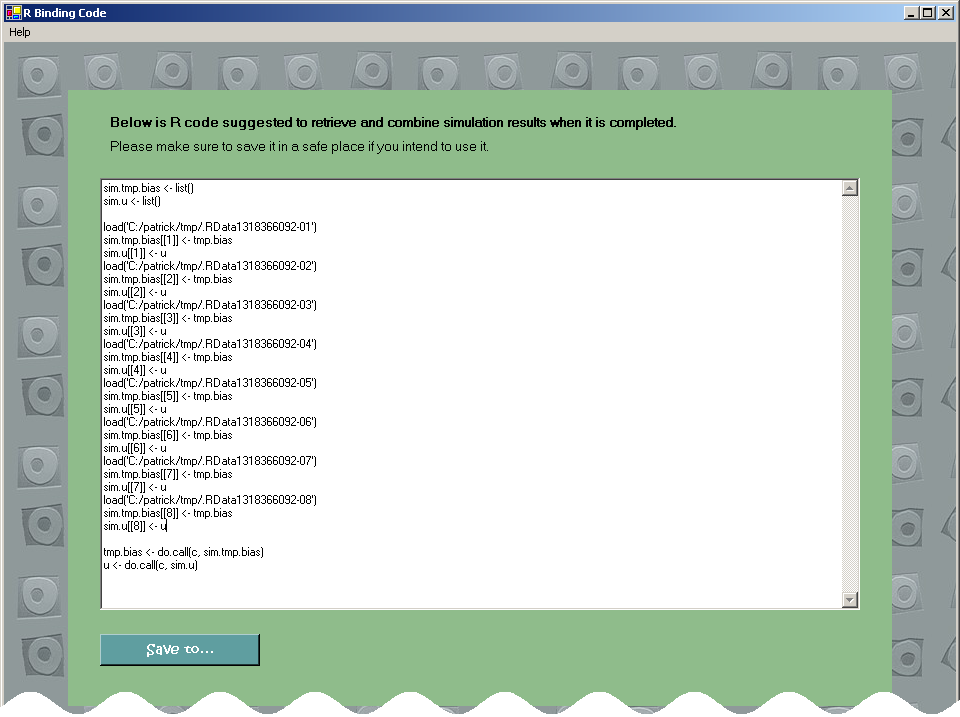|
Clinician's corner |
|
Back to main page |
|
Programmer's corner |
| So, you use WinBUGS a lot? Want more? |
|
Patrick Blisle Division of Clinical Epidemiology McGill University Health Center Montreal, Quebec CANADA patrick.belisle@rimuhc.ca Last modification: 21 sep 2017
|
|
|
Version 1.8 (September 2017)
RSimulationHelper
Using Parallel Computing in R Simulations
| [ | RSimulationHelper is a program to optimize R simulations by using multiple processors simultaneously (parallel computing) | ] |
Menu
Top
Introduction
Running extensive simulations in R can be computer intensive. Many computers have multiple processors, making it possible to split a simulation task in many smaller, and hence faster, sub-simulations. In theory, it is not difficult to copy your R simulation code into as many files as necessary to run parallel processing manually, but as the number of repetitions becomes larger, this task becomes increasingly tedious.
RSimulationHelper is a Perl-driven program that facilitates running R simulations in parallel. The program prompts the user for the number of processors to be used, R Code, the typically large number of simulations to be submitted, the list of R objects to be monitored, and then runs these requested simulations in parallel computing. RSimulationHelper monitors the evolution of the sub-simulations launched, and begins a sub-simulation every time a processor is free. Delays between completed sub-simulations are thus minimized.
Top
Guided tour

The first form of RSimulationHelper (see full image above) allows the user to enter or load the R simulation code to be run, as well as to pick the R objects to monitor and save (to .RData files). Technical settings (number of loops, number of processors, etc.) are also selected from this initial form.
Shall you need assistance in writing R code to bind simulation results, second form (below) will allow you to choose a binding function for each monitored R object.

Binding R code will be presented on a third form (below).

Top
Performance
We have not run a thorough performance assessment of RSimulationHelper, but rather a comparison of a rather simple but massive for-loop simulation with the same code ran on 3 processors via RSimulationHelper. Since R already does some kind of parallel computing, RSimulationHelper is not 3 times as fast as the for-loop — as one could have expected — but is still faster by a 2.2 factor, more or less. The more processors you will use in RSimulationHelper, of course, the greater the time improvement factor will be.
Top
Install instructions
RSimulationHelper is a free executable (.exe) file. Download it now.
It installs in a few clicks. Once you have downloaded RSimulationHelper.zip, unzip it, double-click the file RSimulationHelper.msi and follow the next few steps prompted on screen.
RSimulationHelper obviously requires R be installed on your computer; it also requires Active Perl, a free and easy-to-install package available.
Once Active Perl is installed, you need to install the Process Perl library, which also installs easily. At DOS-prompt, type ppm install process and wait a few seconds for the installation to complete.
Top
Instruction manual
 |
Complete instructions can be read in Instruction manual, which is also available from Help menu on each RSimulationHelper's form. |